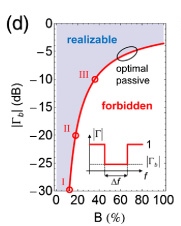
Bending Waves

Scientists have been hard at work chasing the fantasy items of our childhoods. One of them is the invisibility cloak. Engineers have been making devices the are able to bend the light around objects, turning them invisible.
And now we are learning more about the boundaries of this technology. Researchers from The University of Texas at Austin have determined the fundamental physical limitations on the performance of cloaking devices, defining what limits the use of such devices.
Cloaking devices are those that allow objects to become invisible or undetectable to electromagnetic waves including radio waves, microwaves, infrared and visible light. The researchers determined that for any specific wavelength, it is possible to make a cloaking device. But hiding an object from an illumination containing different wavelengths becomes more challenging as the size of the object increases.
But this study does not only determine rough outlines of the limitations of cloaking. The team responsible can calculate the expected optimal performance of invisibility devices before designing and developing a specific cloak for an object of interest.
Magic Materials

The cloaks under study are made from metamaterials, which have special properties enabling a better control of the incoming wave, and can make an object invisible or transparent. They boundaries studied apply to passive metamaterials — those that do not draw energy from an external power source.
The researchers determined that these metamaterials can cloak a medium-size antenna from radio waves over relatively broad bandwidths for clearer communications. However it is essentially impossible to cloak large objects, such as a human body, from visible light waves, which are much shorter than radio waves.
“We have shown that it will not be possible to drastically suppress the light scattering of a tank or an airplane for visible frequencies with currently available techniques based on passive materials…But for objects comparable in size to the wavelength that excites them… the restrictions become looser, and we can quantify them” said Francesco Monticone, a member of the team.